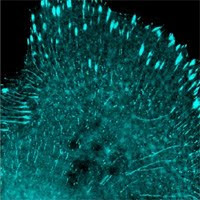here may be only 21,000 distinct proteins encoded in a human genome but there are also thousands of transcripts that do not encode any proteins in human cells. These so called lincRNAs have been a subject of speculations in terms of functions and mechanisms underlying the functions. In a recent Nature Article, Eric Lander’s group at Harvard and their colleagues have shown by RNAi that ES-cell expressed lincRNAs function in keeping pluripotency. They seem to maintain expression of pluripotency-related factors such as Oct4 and Nanog, while at the same time lincRNA genes appear to be targets of these factors’ transcriptional control.
As shown by immuneprecipitation, lincRNAs bind to chromatin proteins such as those of the polycomb family and influence chromatin structures and gene expression, at least as part of their functional mechanism. It would be interesting if the RNAi-against-lincRNAs experiments were complemented by transgene expression, something we might see in follow-up mechanism studies on lincRNAs. Pulldown of lincRNAs instead of the polycomb proteins could be helpful in identifying their unknown partners.
It will also be interesting to see how lincRNA profiles correlate with iPSCs created by different methods or from different sources. It may be worth it to even try and use lincRNAs as reprogramming reagents as mi-RNA302, miRNA369, etc.
Guttman et al. 2011, Nature
http://news.allelebiotech.com/index.php?mod=article&cat=iPSStemCells&article=1841




No comments:
Post a Comment